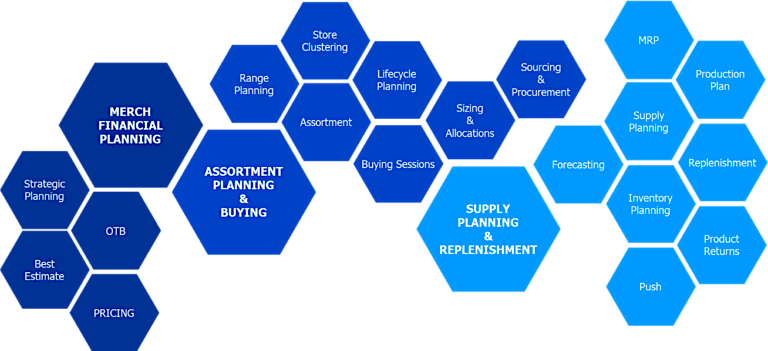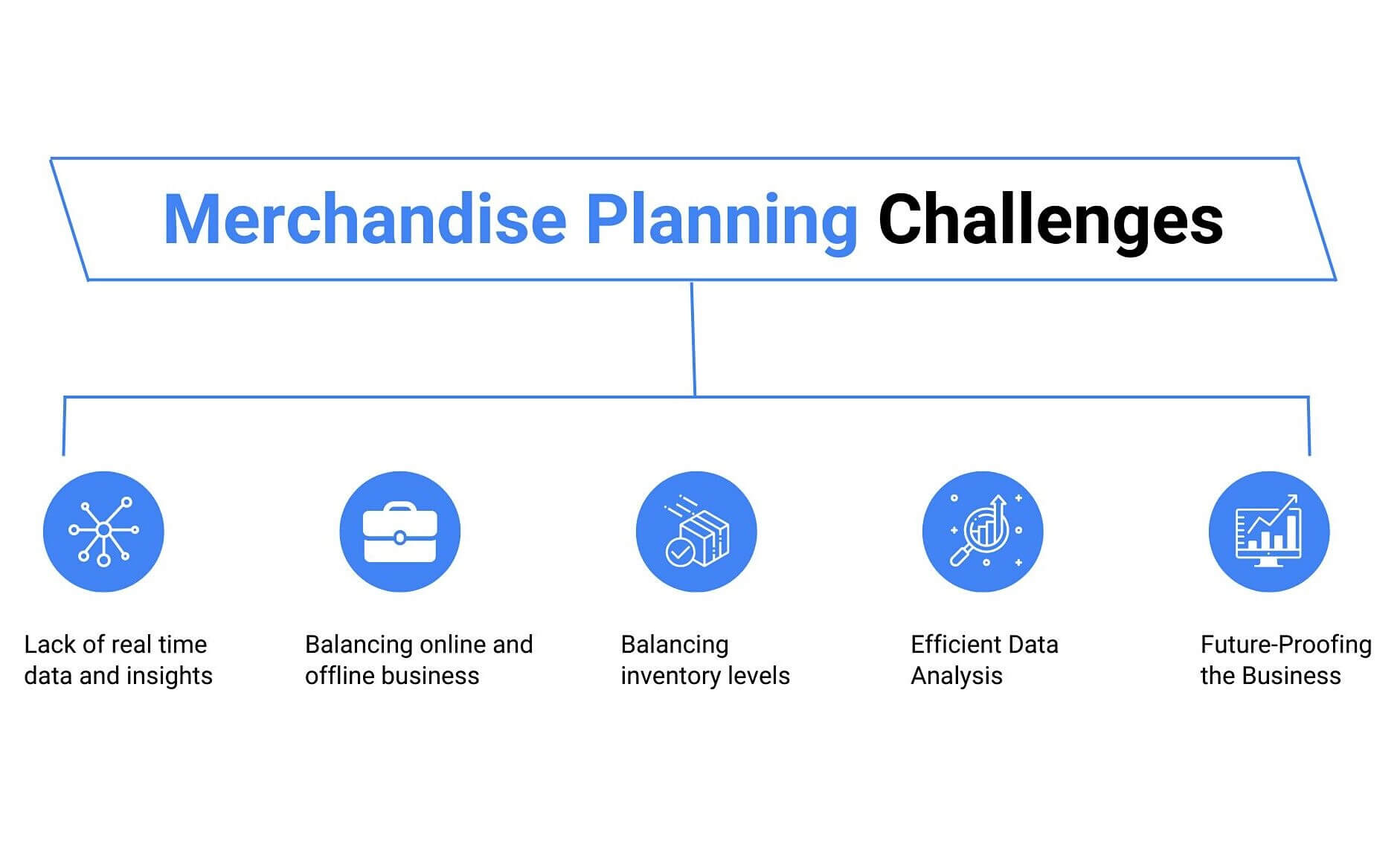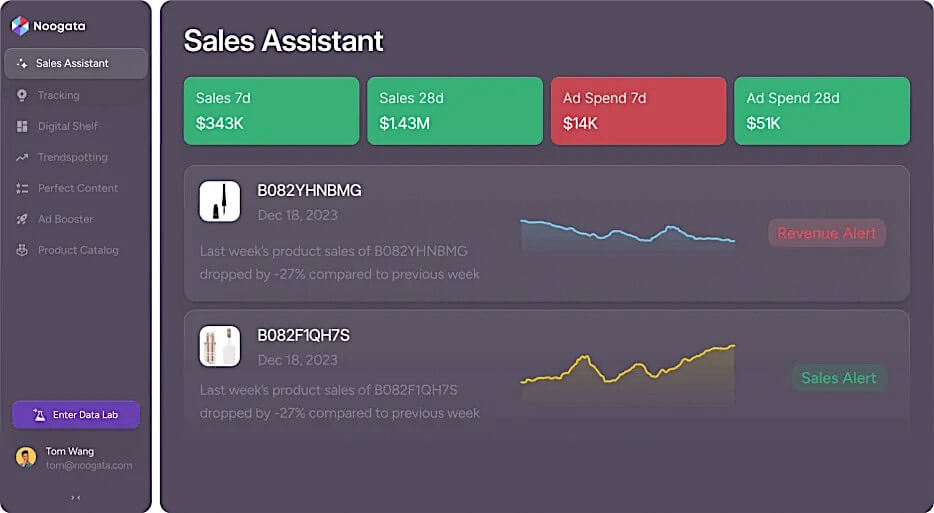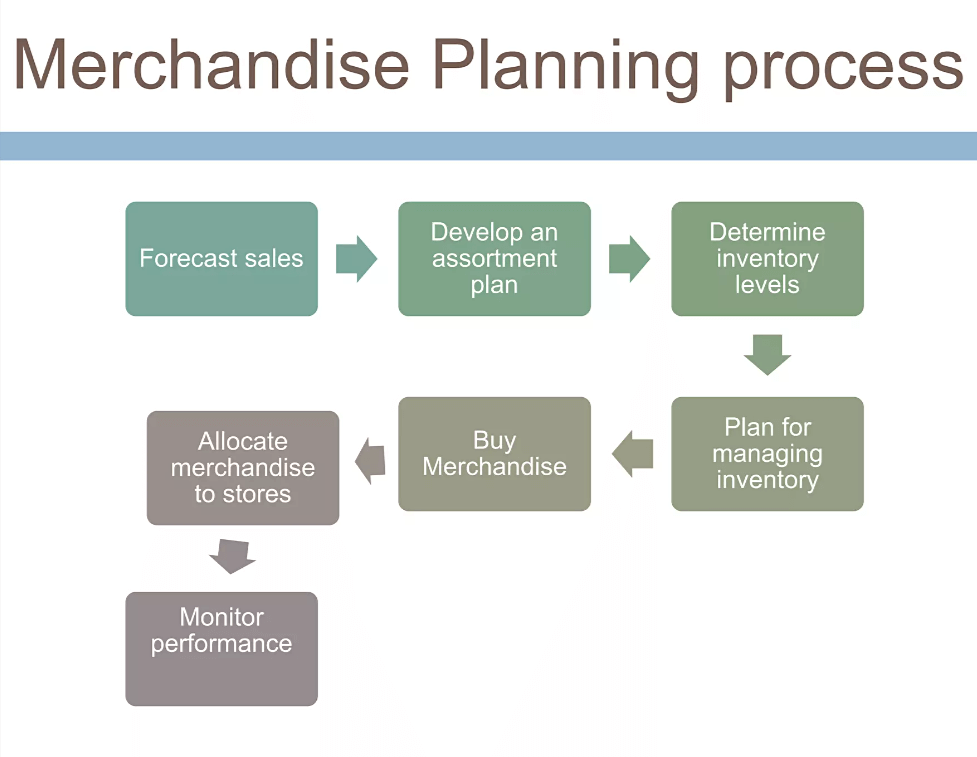Anticipating consumer demand can feel like a never-ending race in eCommerce. Retailers constantly grapple with fluctuating customer preferences, fierce competition, and the complexities of multi-channel sales. The risks of excess stock of slow-moving items and costly stockouts of popular products compound these challenges.
Traditional planning methods that rely on outdated tools and manual processes exacerbate these issues by leading to slow, error-prone workflows, misaligned inventory levels, and suboptimal assortments. With 44% of consumers wishing retailers would improve in providing current inventory information, these shortcomings cause poor customer experiences and lost market share.
A more effective solution is Merchandise Financial Planning (MFP), a strategy that allows you to accurately forecast demand and maintain an optimized inventory tailored to your customers’ preferences. This ensures your merchandise selection aligns with your business’s financial objectives. Here’s everything you need to know to start with MFP.
What is merchandise financial planning?
Merchandise financial planning describes a strategic approach toward selecting and managing the products your retail store carries. Budgeting, purchasing decisions, demand forecasting, determining inventory levels, and setting prices all fall under the umbrella of MFP.
Unlike category planning, which focuses on product selection at the category level, and assortment planning, which involves more granular determinations about what products to stock, MFP emphasizes the higher-level financial aspects of these decisions. MFP is a critical process for all retailers, helping to align your merchandising strategies with your financial goals.
Why is merchandise financial planning crucial for eCommerce?
In today’s retail and eCommerce environment, consumer preferences are constantly changing. Merchants are fighting for market share against competitors across the globe over new and complex sales channels. Against this backdrop, static formulas and guesswork are not up to the task of anticipating demand and meeting it with timely and sufficient inventory that respects your purchasing budget.
A well-executed MFP process can give you a significant competitive advantage by accurately forecasting the demand for online sales, guiding the optimization of your inventory management across all of your warehouses and fulfillment centers, and ensuring a level of product availability that leads to consistently satisfying customer experiences.
What are the benefits of merchandise financial planning?
Merchants realize many business benefits by putting merchandise financial planning into action, including:
Increased Online Sales and Profitability
An optimized product assortment that matches the needs and wants of your target audience will lead to higher conversion rates and revenue.
Improved Inventory Turnover
MFP will reduce both overstock and understock, lowering costs and boosting efficiency.
Enhanced Customer Experience
When the products customers want are out of stock, they leave disappointed and lose trust in the merchant. MFP can ensure that popular products are always in stock across your most critical digital sales channels.
Strategic Alignment
MFP aligns your merchandising strategies with your eCommerce business’s big-picture goals, protecting your bottom line and contributing to smart growth.
Data-driven Decision-making
Instead of relying on intuition and inconsistent heuristics, you can leverage data analytics to identify market trends, quantify demand, and make informed decisions. Ecommerce intelligence tools make applying advanced AI and machine learning to your MFP analytics easy, generating actionable insights that help make all these benefits a reality.
What are the challenges of merchandise financial planning?
While merchandise financial planning may be necessary and beneficial, implementing it comes with challenges:
- Data Silos and Inconsistent Data Quality – When your plans are based on multiple data sources that don’t communicate, your insights may be based on incomplete information—and steer you in the wrong direction. For example, if sales data is in one system and inventory data is in another, a retailer might overestimate demand and overstock a product due to the lack of visibility into actual sales.
- Demand Volatility – Consumer preferences and economic conditions can change overnight, and MFP processes must be agile to keep up.
- Legacy Systems – Effective MFP requires handling real-time data monitoring, large datasets, and complex analytics. Outdated tools and legacy software platforms may lack these capabilities.
- Cross-channel Coordination – Aligning multiple sales channels can be difficult, especially when dealing with both online and offline sales.
- Manual Processes – MFP processes that require human operation and oversight are time-consuming and prone to error.
The 6 Main Components of Merchandise Financial Planning
The merchandise financial planning process includes many different activities and analytics. It can vary depending on the type of business conducting it, the product categories it sells, and its financial goals.
Let’s break MFP down into its six main components:
- Sales Forecasting – Establishing realistic sales targets based on historical data, market trends, and customer behavior.
- Inventory Planning – Optimizing your inventory levels to meet consumer demand without ending up overstocked.
- Assortment Planning – Ensuring you carry the right mix of products for your customers and adjusting it based on locations, seasons, and other factors.
- Margin Planning – Designing your pricing and markdown strategies to achieve your target profit margins.
- Channel Planning – Customizing your assortments and pricing for each sales channel.
- Budgeting – Allocating the right amount of funds to follow through on your plans and maintain an appropriate inventory level.
The 7 Steps of Merchandise Financial Planning
Now that you’ve got a sense of what MFP has in store, let’s walk through the actual steps of the process.
1. Define Your Financial Objectives
MFP is as much about finances as it is about merchandise. Your plans need to be built around financial objectives that make sense for your business and support your overall growth and brand development goals. Specifically, you’ll want to set online sales and profit targets for your merchandise strategy.
2. Analyze Historical Data
Like reggae artist Ziggy Marley once sang, “If you don’t know your past, you don’t know your future.” Reviewing past online sales performance data and customer trends will provide you with a baseline of reliable information for projecting future purchasing behavior. Historical data can reveal seasonal peaks and slumps, the average duration of consumer trends, and other patterns to factor into your plans.
3. Forecast Demand
However, as crucial as historical data is for unraveling the mysteries of the future, you can’t always count on the past repeating itself. Forecasting demand using predictive analytics is a critical part of the process.
Market research, customer behavior data, industry trends, and the overall economic outlook all influence the accuracy of your predictions, and using AI-powered solutions like Noogata to extract insights from the data can streamline and optimize this all-important step.
4. Develop Sales and Inventory Plans
At this point, you can use your demand projections to create a sales strategy, map out your product categories, and set targets for inventory levels. Make sure to account for markdowns, stockouts, and other events you can expect based on previous sales cycles, and look for ways to minimize their occurrence (or at least mitigate their impact).
5. Create Assortment and Pricing Strategies
Now, you can start thinking about the products you’ll carry, the type of assortment strategy you’ll follow, and how to price products to outsell your competitors without compromising your profit targets.
Noogata’s competitive intelligence and market research tools can also play an important role here, illuminating competing merchants’ pricing strategies and providing insights into how consumers will respond to your product selection and price points.
6. Align with Marketing and Promotions
In addition to aligning with your financial objectives, your merchandising plan should synergize with your online marketing, advertising, and sales promotions. Work with your sales and marketing teams to share information (Break down those silos!) and come up with campaigns that play off of the strengths of your product assortment and inventory levels.
Promotions can be a great way to sell off slow-moving items, but be careful about focusing your ads and marketing efforts on products you’re having difficulty keeping in stock.
7. Monitor and Adjust
Finally, always monitor the performance of your merchandising plan and adjust its components as needed. Market trends and consumer sentiment can shift rapidly, supply chain issues can upend inventory plans, and you must be ready and willing to adapt to the eCommerce environment as it evolves daily. Insights from Noogata can help you anticipate change and modify your strategy in real-time, ensuring your ability to keep pace.
Plan for Success with Noogata
Merchandise financial planning is essential for ensuring you have the right products in the right quantities to meet customer demand while adhering to your budget. Although implementing MFP can be challenging, Noogata can simplify the process by offering market research, competitive intelligence, and assortment planning insights.
Whether you’re managing an Amazon storefront or multiple sales channels, Noogata equips you with the necessary tools to succeed. The AI-driven platform dismantles data silos, analyzes historical trends, and accurately forecasts demand. It enables you to optimize inventory, curate effective assortments, and make data-driven decisions that boost customer satisfaction and drive growth.
Try a free demo today to see how Noogata’s Assortment Intelligence can enhance your merchandising strategy to increase sales and customer satisfaction.







